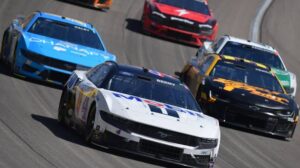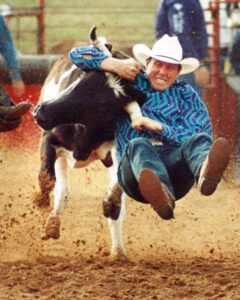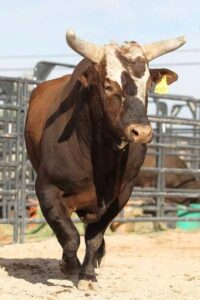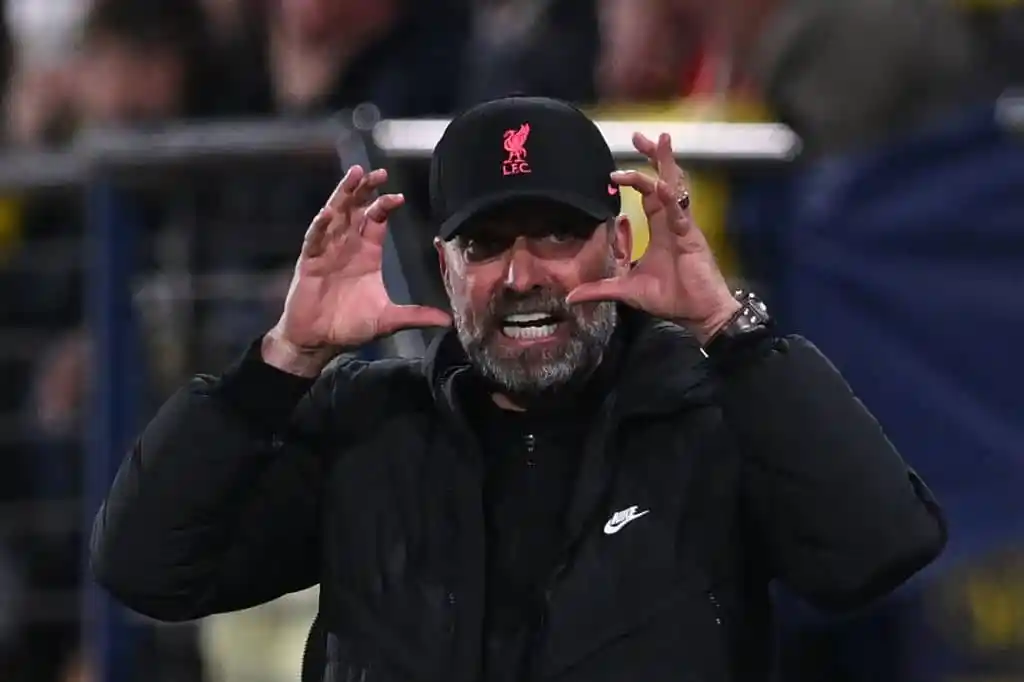
Four players make up a box midfield: two deeper pivots, two number 10s, and their collective alignment resembles a box.
What duties do players have while in possession in a box midfield?
The major possession goals of a box midfield are to control the ball, advance the action up the field, and open up scoring opportunities for the front line.
In front of the central defenders, the two pivots provide support. An inverted full-back who has advanced into midfield when their team is in possession in particular situations may serve as one pivot.
Both pivots are often viewed as midfielders first and foremost. If necessary, each player can individually drop into the back line, notably to make room for a full-back to advance (see below).
The pivots receive the ball from the back line, and to advance the action, they should combine with the two number 10s up front or use wide runners. They need to be extremely aware of time, distance, and pressure because they frequently face pressure from behind.
Pressure from behind and between the lines will also be felt by the two 10s, albeit slightly more intensely. Through balls, narrow crosses, or through dribbles and combinations with any centre forwards or wide attackers, they seek to penetrate the opposition team’s last line. The 10s should aim to receive in behind, attack crosses, take shots, and ultimately contribute to their team’s goals in a respectable manner.
What roles do players in a box midfield have when they are out of possession?
Without the ball, the pivots cover, block, and screen the center areas in front of the defense, preventing passes from piercing the middle of the defense. Additionally, they contend for the first and second direct play phases and assist counter-pressing in key areas. In order to assist their full-back or wing-back teammates in defending the channels, the pivots must follow opposition forward runners, particularly those who enter the center but also those who enter the wide areas.
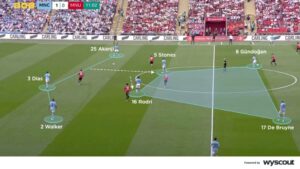

The number 10s can work on either side of a single centre forward and help with high pressing. Depending on the team’s out-of-possession strategies, they must be able to leap onto the opponent’s center backs and into the wide areas to force play either inside or towards the touchline. The 10s screen the middle and provide straight access to central midfield in a more sedate block.
What are some effective instances of a box midfield in various formations?
When attacking, clubs in the Red Bull network frequently use a narrow shape, most frequently a 4-2-2-2 (below). In order to form the box, the two wide players typically go inside before the two central midfielders, or a diamond-shaped midfield rearranges into two pivots and two 10s.
Red Bull Salzburg and similar teams are most dangerous while counter-pressing and launching attacks after high rebounds or when counter-attacking from a deep position. The two narrower wingers receive between the lines as 10s in the box midfield of the 4-2-2-2 formation. While the central forwards pin the opposition center backs and run beyond, they are frequently at ease moving forward or dribbling past opponents in their role as starting wingers.
Chelsea with Tuchel
Thomas Tuchel employed a box midfield in a 3-4-3 formation while at Chelsea, with two of Mateo Kovacic, Jorginho, or N’Golo Kanté serving as the deeper pivots. All of these players were competent at moving the ball forward, supplying the overlapping wing-backs, and defending central areas (see below).
Mason Mount, Christian Pulisic, Hakim Ziyech, and occasionally Timo Werner and Kai Havertz were all capable of rotating with the central forward, running beyond, attacking crosses, and creating opportunities. While at Chelsea, Antonio Conte also used a 3-4-3 with a box midfield.
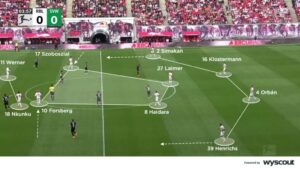
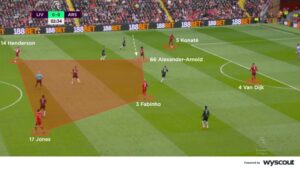
Guardiola and Klopp
When using a box midfield, Jürgen Klopp and Pep Guardiola both added a second pivot from one of the back lines. When in possession, Guardiola frequently instructs a full-back to move inside. At Bayern Munich, this was Philipp Lahm, and at Manchester City, this was Joo Cancelo and Oleksandr Zinchenko. Trent Alexander-Arnold has been moved by Klopp from right-back (below) into midfield, where his passing is more effective.
Guardiola refined this concept in the second part of the 2022–23 season in which his team won the Triple Crown. John Stones was shifted from the defensive line into midfield (below), where he was joined by Rodri. Kevin De Bruyne and Ilkay Gündogan, the number eights, were able to ascend and launch an attack from the top of a converted box midfield as a result.
What advantages come from using a box midfield?
The box midfield allows teams to control this part of the field, and frequently also the ball, by numerically overloading two- or three-player central midfield units. It permits several core combinations while also offering sufficient assistance in the inner channels to enable wide attacks.In terms of defense, it ensures a sufficient number of counterpressers in central midfield, which opens the door for swift recoveries. Due to the numbers being able to contend for the first and second phases, the box midfield also provides a powerful defense against direct play. The box midfield provides excellent protection for central defenders as well.
What are the drawbacks of using a box midfield when playing?
When a team is in possession in a box midfield, the pivots and number 10s are frequently on the same vertical line. Opponents may be able to block passing lanes into the tens as a result. Due to the quantity of players needed to compose the box midfield, width might occasionally be limited.In order to impede development and reduce the production of chances, the opposition can defensively cover the center with its own personnel while defending in a compact, relatively limited area.
Inverted full-backs are an example of a player that frequently switches between their out-of-possession position and an in-possession box-midfield role. These players are exceptionally specialized and thus quite uncommon. It should come as no surprise that, even at the top level, relatively few clubs have these players on hand.




